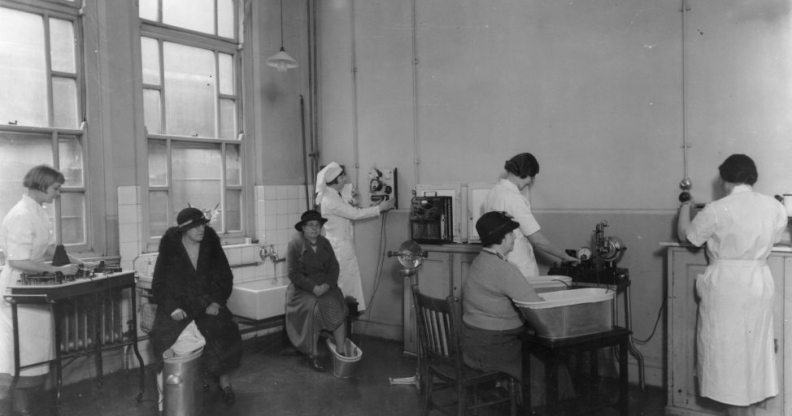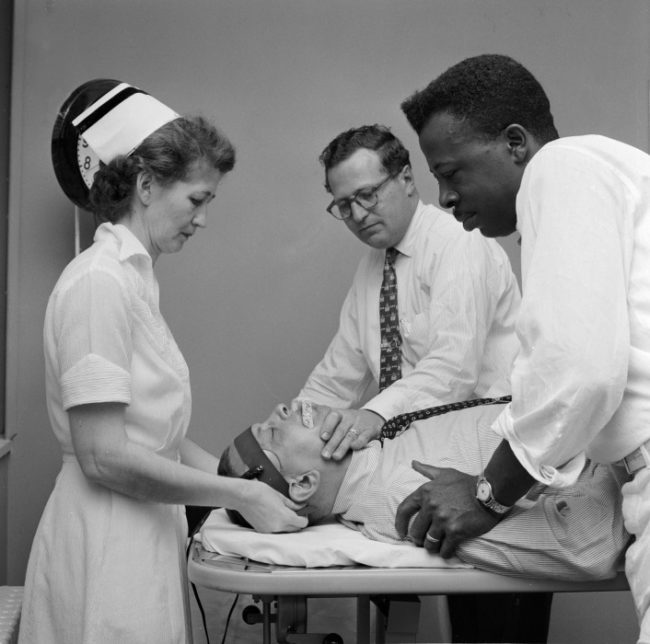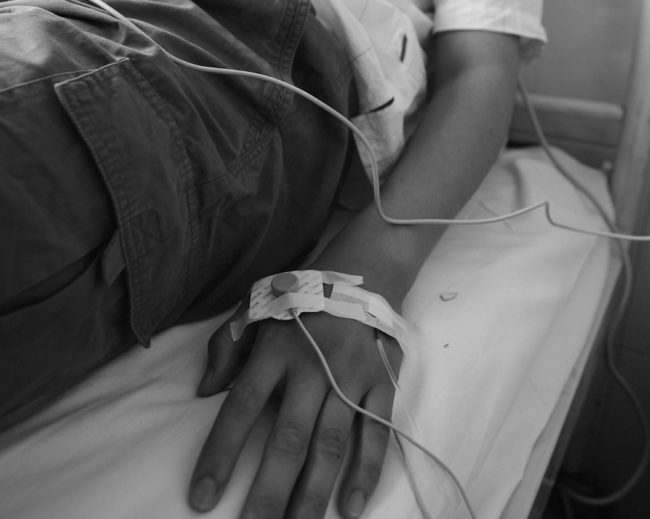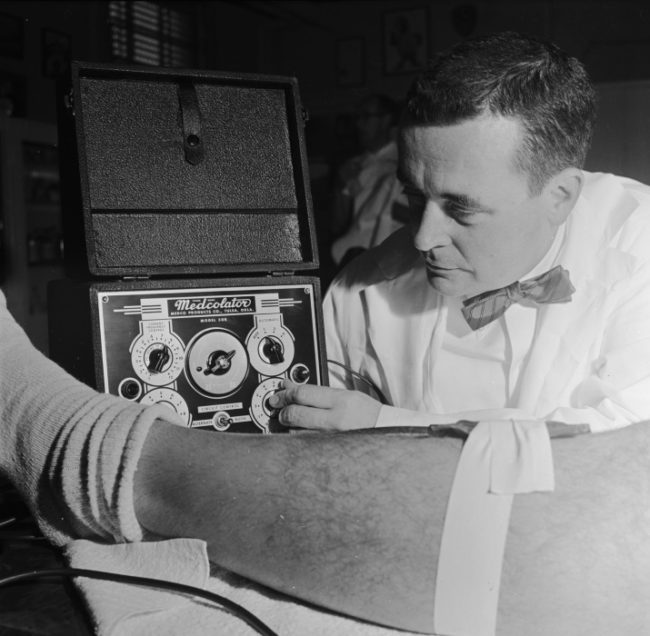Psychiatrists apologise for using electric shocks and drugs to ‘cure’ gay, lesbian and bisexual people

(Getty)
The Royal College of Psychiatrists has released a statement that, for the first time, acknowledges the harm inflicted upon lesbian, gay, and bisexual people who were subjected to aversion therapy under the college’s care.
Aversion therapy is the practice of using electric shocks or nausea-inducing drugs to try to “cure” people of their sexual orientation.
The statement was issued by Professor Wendy Burn, President of the RCP, in response to a BuzzFeed interview with Jeremy Gavins, a patient who was given multiple hours of electric shocks every week for six months in the early 1970s.

(Getty)
Read the full statement from the Royal College of Psychiatrists below:
There are no words that can repair the damage done to anyone who has ever been deemed ‘mentally unwell’ simply for loving a person of the same sex. For those who were then ‘treated’ using non-evidence based procedures by mental health professionals up until as late as the 1970s, the trauma of such experiences can never be erased.
Related: Former student opens up about electro-shock therapy to ‘cure’ the ‘bad habit’ of being gay
It is important to acknowledge that this was once standard procedure within mental health services, and indeed reflected a wider societal attitude of fear and hatred towards homosexuals.
It is also vital to emphasise that times have changed. Studies that once purported to have a ‘cure’ to homosexuality, or indeed to classify it as an illness in the first place, have now all been disproven and debunked.

Electricity in hospital (Getty)
Studies which once showed conversion therapies to be successful have all been exposed as seriously methodologically flawed. In this day and age, there is no feasible scenario in which a fully trained mental health professional would administer such treatment.
The Royal College of Psychiatrists believes strongly that our first role as Doctors is to do no harm, and we firmly consider the provision of any intervention purporting to ‘treat’ something which is not a disorder, as wholly unethical.
Our position statement clearly states that homosexuality is not a disorder and should not be treated.
Psychiatry is one of the most diverse medical specialities – which fully reflects the diversity of patients. For us, it is an honour and a privilege to get to know each of the individuals that walks into our workplace, and to understand their concerns, desires and ambitions; parts of them that have may not have been shared with anyone else.
It is our job to offer non-judgemental advice to anyone who seeks our help, no matter their background, age, gender, sex, race or religion. Similarly, we encourage all those interested in mental health to choose psychiatry and take on what can only be described as one of the most fulfilling and rewarding careers.
The injustice of those within the LGB community who were treated as mentally unwell due to their sexual orientation alone is keenly felt by mental health professionals. We can’t re-write history, but what we can do is make it clear that today our doors are open and that principles of equality and diversity will be passionately upheld.
For anyone seeking mental health support, we are here. For anyone with a desire to choose psychiatry and support others with their mental health, we are here. For anyone hoping to work with us to right the wrongs of the past, we are here.
It is with profound regret that we hear of the lifelong impact that treatments such as ‘aversion therapy’ had on Jeremy Gavins and others.
It is with openness, kindness and humility that we hold our hands up, open our doors, and fight tirelessly to provide the ethical, evidenced-based mental health treatment that all of us deserve.
The use of electric shocks to “cure” gay people was not uncommon in our recent history.
A Birmingham man spoke in 2014 of his deep regret at undergoing gay ‘cure’ therapy on the NHS in the 1970s.

Electricity being used to treat patients (Getty)
Asked to describe the ‘cure’, John replied: “It was a variation of aversion therapy called ‘avoidance therapy’. It involved showing photographs of men, photographs of women, and giving the person a series of electric shocks.”
He continued: “But also giving you an element of choice, so if your saw a picture of a male and you rejected that, then there was a fighting chance that you would avoid the electric shock.”
Reflecting on the therapy John said: “It gave me very false hope.
“It was never ever going to kick in, it was never ever going to work, [and] the whole thing has been a failure”.
He went on to say: “I still feel very disappointed because it means as a consequence I am going to pass through this life without ever having a full relationship with a human being.”

